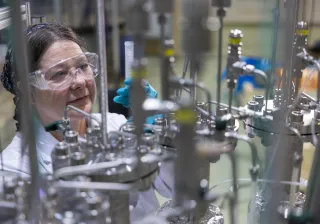One of the main barriers for moving from linear to circular system is the lack of verified impact that circular economy has for companies, citizens and the whole society. Circularity is an important issue to address already in the design phase. Designers are in a position to substantially reduce the life cycle cost and the harmful environmental impacts of products and services by making innovative design decisions. Thus, the assessment of material and energy use, and emissions, and total life cycle costs and benefits for the relevant ecosystem actors should be a crucial part of circular design. Integrating life cycle assessment (LCA) and life cycle costing (LCC) offers a way to demonstrate soundly the multidimensional impact of various circular designs.
LCA - are design alternatives environmentally sustainable?
Main approach for assessing life cycle environmental impacts of various designs is Life Cycle Assessment (LCA). LCA provides information on environmental impacts (like climate change, resource depletion) of design alternatives. Therefore, it enables the design and selection of solutions with lower environmental impact. Further use cases include:
- testing the assumptions of design alternatives
- identifying limitations of the designs and finding alternative approaches
- setting objectives for practical implementation at business level
- continuously improving the circularity
LCA provides an assessment of the environmental impacts that a product or service has over its life cycles.
Successful deployment of LCA requires co-operation between the different actors and inventory data collection from the whole ecosystem. Inventory data is systematically analysed and converted into potential environmental impacts by following guidelines presented in relevant standards (ISO 14040-44). Systematic life cycle approach is important in order to avoid sub-optimization (i.e. environmental impacts will be shifted to another life cycle stages or impact categories).
LCC - what are the life cycle costs of design alternatives?
While LCA addresses the environmental impacts, Life Cycle Costing (LCC) focuses on the economic costs of design alternatives over their life cycle. LCC involves aspects such as labour and unavailability costs and production asset related costs not addressed in LCA. It may also internalise environmental and social costs to various actors affected by the design options. Additionally, it considers circularity aspects such as durability, reparability, spare parts availability, recyclability, secondary materials and production side streams from the cost perspective. LCC evaluates designs in terms of their relative cost, timescale, performance or dependability. Additional use cases include:
- providing ways to reduce costs throughout the value chain and life cycle phases
- justification of the decision to adopt a circular economy (CE) model because companies and organizations will have the necessary information on improvement in cost structures
- visualisation of strengths and vulnerabilities of design alternatives
- visualisation of uncertainty in assumptions
- and consequently strengthening the organization's strategic positioning
LCC provides an assessment of economic and cost implications of a product, service or process over its life cycles.
As an example, transition towards circular business models requires manufacturing companies to broaden their scope to cover the whole life cycle of their products and services. This implies that, the manufacturer is the actual cost owner during product use phase, not the customer. Manufacturer is then highly motivated to deploy circular design to reduce the life cycle costs over the entire life cycle, which also has a positive impact on the environment.
Exploring the potential of integrated LCC-LCA assessment in circular design
LCC and LCA are complementary approaches that we need to optimise the design and to select among circular design options.
We argue that an integrated approach provides decision-makers with a balanced set of information when considering adoption and development of design alternatives. For future research, we envision several use cases for combined LCC-LCA:
Integration of LCC and LCA aims for optimising design alternatives from environmental and economic perspective.

- Inventory data such as energy consumption is utilised in both LCA and LCC
- LCA provides environmental impacts that is used as input data for LCC
- LCA provides the environmental assessment and select the most environmentally viable alternatives. LCC is used to either select the most viable alternative from economic perspective or identify key economic barriers for design alternatives
- LCA and LCC are integrated and used as a multi-criteria assessment tool to optimise circular design related decisions through a web-based dashboard
- Consideration of impacts and costs related to additional life cycles after the first life of a product, service or system?






